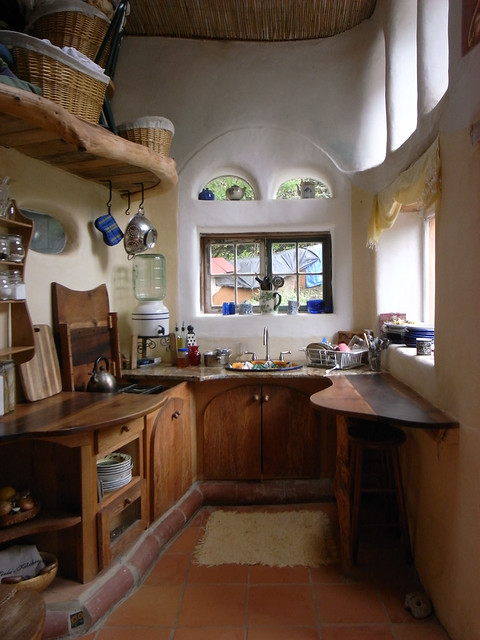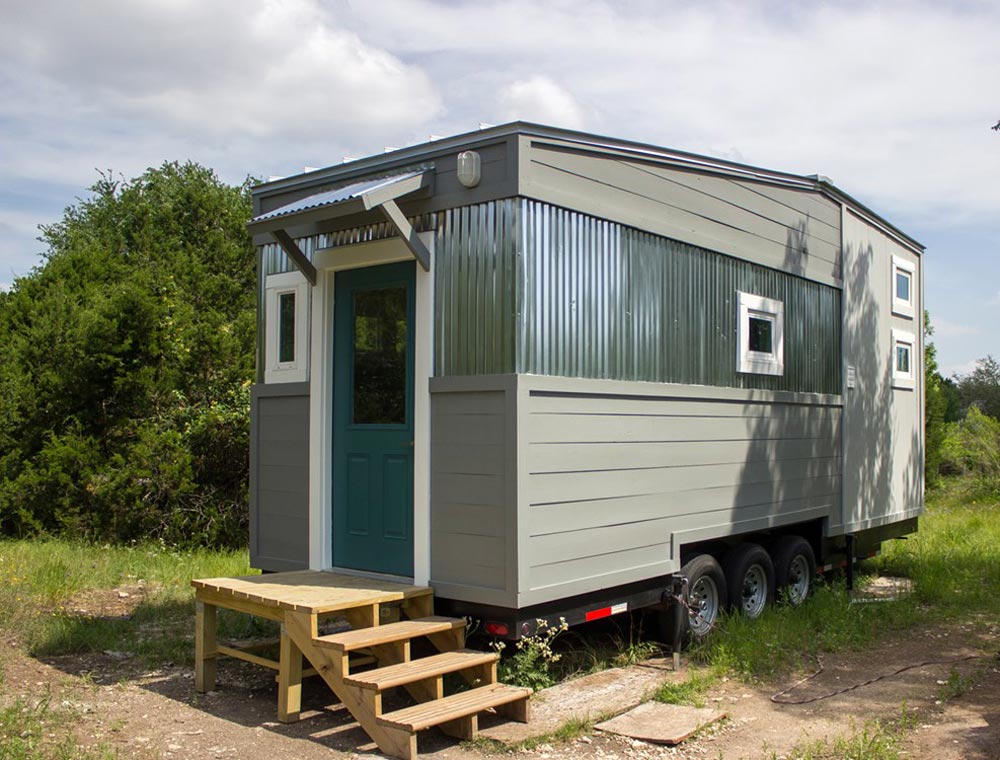The final part in a series looking at issues in the Tiny House movement. You can read Part 1 here and Part 2 here.
After exploring the issues of classism and financial accessibility as well as the difference between a small home and a Tiny Home, in this final chapter in the series, we will take a look at accessibility.
Are Tiny Homes really for all?
Of course on this blog I
will consider accessibility, how could I not? On first appearances,
Tiny Homes may be a good accessible alternative and for some they
certainly are: the small space puts everything close to hand and the
home owner doesn’t need to worry about maintaining and looking
after a large residence. Additionally the portable nature of the
traditional Tiny Home means that they can be located in a place that
is convenient and beneficial to the owner – close to relatives or
amenities for example, or even in the back garden of a relative. We
are also used to the concept of disabled people or those with
particular adaptations living in smaller units - whether for their
own benefit or somebody else’s – as in the case of retirement
units and sheltered accommodation so the idea of “putting”
disabled people in affordable Tiny Homes may not be that alien. The
reality however is that Tiny Homes are often far from accessible and
worse, the Tiny Home Movement can have a latent thread of disableism
running through it’s rhetoric.
Though not at the core
of it, the Tiny House Movement is very much about aspirational
lifestyle and reflects aspects of health and well-being trends which
can includes things such as “healthy” eating, being active and
the firm belief (divorced from any spiritual roots) that yoga can
cure all. A common feature of Tiny Homes is that the sleeping area is
in an elevated loft space that must be accessed by some step or
ladder arrangement. This itself presents an obvious accessibility
hurdle but this is further exaggerated by those living in tiny homes
who often talk of it as a way of keeping fit or staying lithe into
old age. As is common in many other areas of our society the idea
that we may become ill or disabled at any point is one people simply
don’t contemplate. There are, thankfully, an increasing number of
designs which have ground level beds or beds that fold or slide out
of craftily hidden nooks. Certainly the opportunity for customisation
and bespoke building does mean that there is room for innovation and
the opportunity for accessible small space beds, but it isn’t
currently the norm.
 |
| Pauline Sugarman's clever design with a slide away bed. |
 |
| When pulled out the bed blocks access to other features |
From my own point of view there would be a couple of unexpected challenges to living in a Tiny House, and they are both to do with laundry. Many Tiny Houses are designed without space for a washing machine or any drying space. For many this is a reasonable decision - they have access to laundry facilities on their parking site or are able to take their laundry to a launderette (or in one case were able and content to wash their clothes in a pot over an open fire outside). This is absolutely fine if it is something you can do. But it's not something I can do, I need a washing machine in easy reach and I need the space to be able to dry things or an efficient washer-dryer combo that can operate off of whatever electrical power supply I have. Additionally though, I need a lot of clothes. No this isn't just me justifying owning a lot of clothes it's actually a great adaptation for disabled people. If you don't have the energy to do a load of laundry you still need to have clean clothes to wear. So you need enough options to have stuff waiting to be washed and ready to wear. But that takes up space and means the common Tiny House lifestyle hack of downsizing a wardrobe or utilising a "capsule wardrobe" just isn't feasible. With these extra space needs a Tiny House may just not suite some disabled people.
Think also of getting
in to a Tiny Home – most are raised on trailers or on a temporary
foundation and require a set of steps to get in to. Obviously there
is an accessibility issue right away. Foldable stowable or temporary
ramps do of course exist and there are a smattering of ramped homes
out there, even some with pneumatic platforms, but they come at a
premium price and are difficult design elements to add. We don’t
just have to consider their suitability for use but also how durable
they are, how much space they take up and if they can easily be
removed or stowed for travel (or to comply with “temporary
dwelling” regulations). How inclusive are Tiny Houses when people
simply can’t get into them and how revolutionary is that compared
to the standard and inaccessible housing model. Once inside how do
you move around. Small spaces are difficult for people with
wheelchairs (manual or electric) as well as for those with crutches
or canes and visibility issues – how do you navigate your own tiny
home. The plus side of course is that you don’t have to go very far
to get to anything and it would be plausible to fit in easy to reach
grab rails throughout!
 |
| Not strictly a Tiny House this "outbuilding" features a rare ramp. Bungalito by John Hindman |
We need more creativity
It’s not that some
solutions don’t exist and of course not all disabilities and their
needs are the same, but the prevailing thinking in Tiny Home design
isn’t one that has yet embraces accessibility needs or the full
potential of bespoke home design.
And that really is at
the crux of the issues I see in the Tiny Homes movement. We have
something that could potentially be revolutionary in a number of ways
but, as long as the prevailing thinking stays influenced by current
housing standards and trends, it will never reach it’s potential.
In order to actually serve as a revolutionary, accessible and truly
inclusive form of housing it has to break free of the systemic forms
of oppression and discrimination that foster our current housing
inequality.
If you like my writing why not support me by












